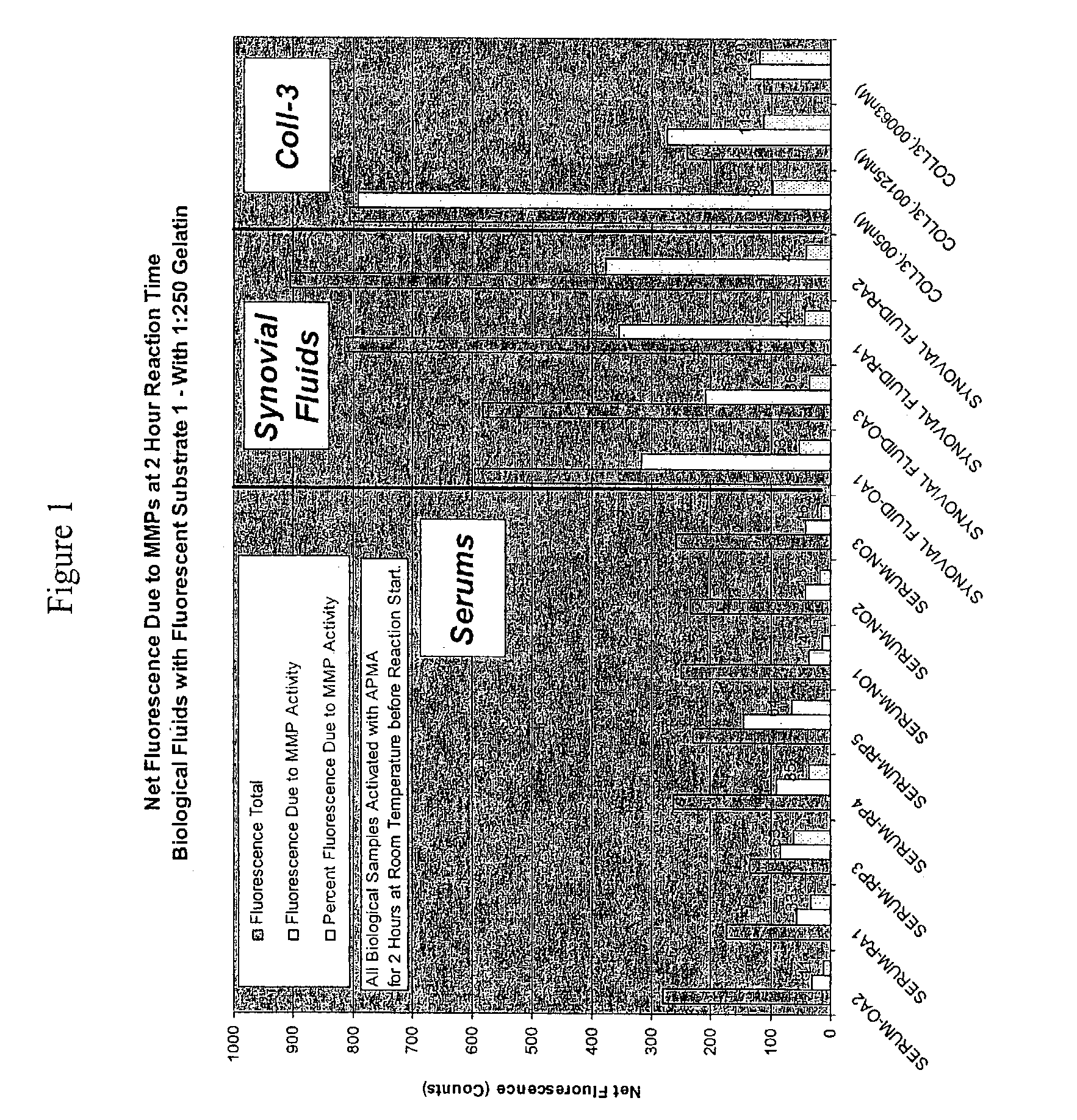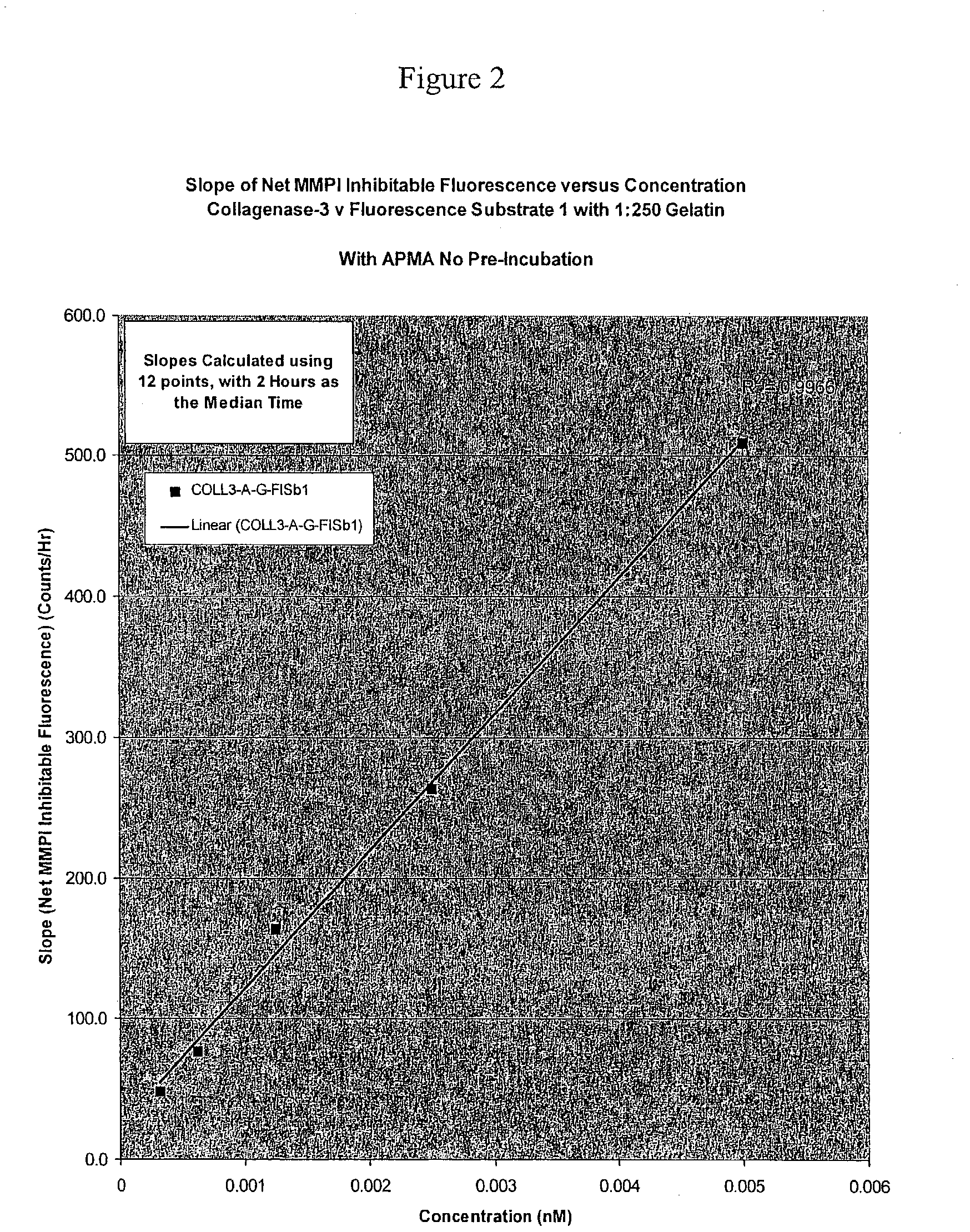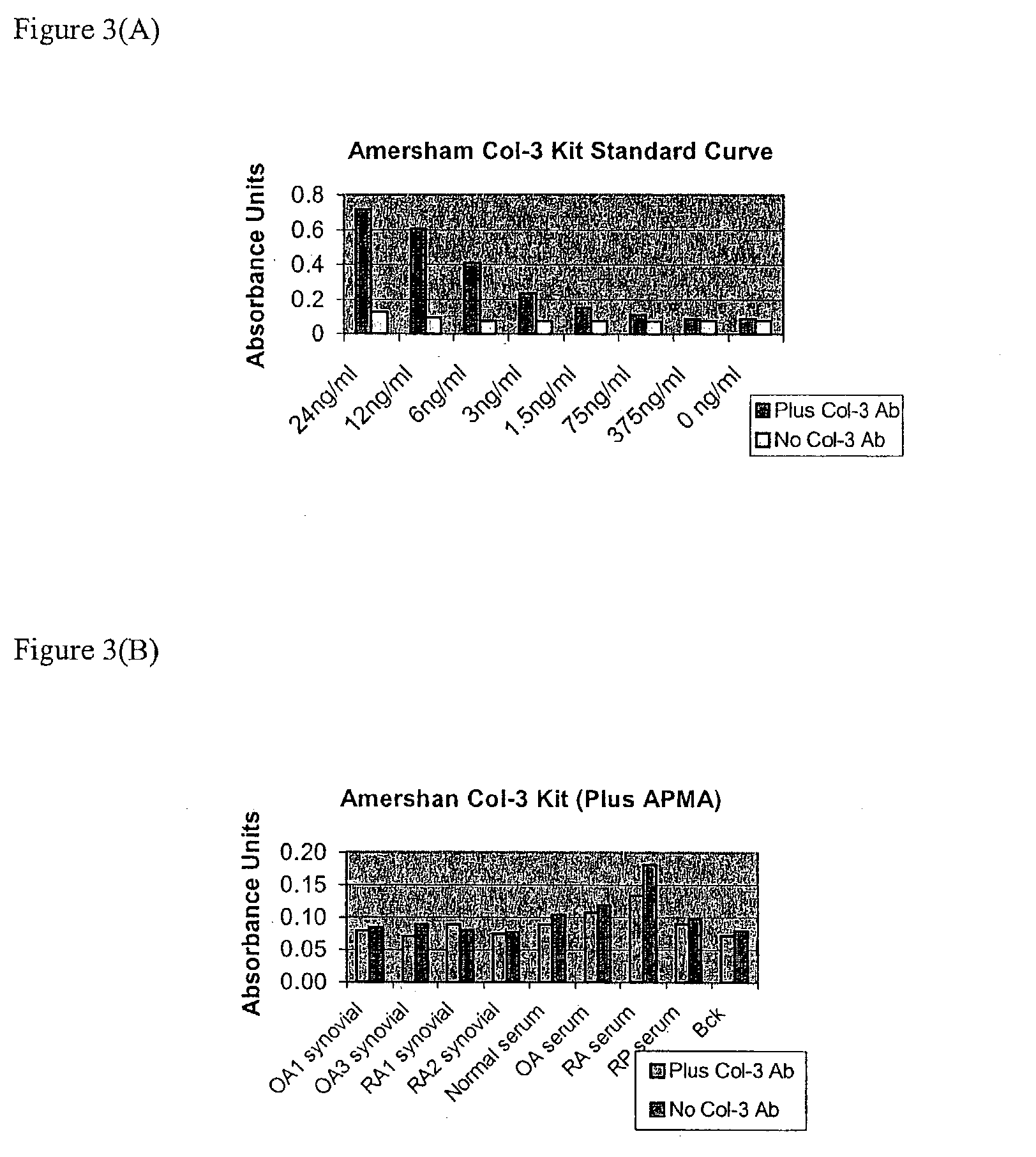Assays for measuring matrix metalloproteinase activities
- Summary
- Abstract
- Description
- Claims
- Application Information
AI Technical Summary
Benefits of technology
Problems solved by technology
Method used
Image
Examples
example 1
Substrate Specificity Data for Collagenase 3 and the MMPs
[0108] Determination of Enzyme Concentration.
[0109] In a black coated plate with clear bottom was added the fluorescence substrate, Dabcyl-GPLGMRGC(Fluorescein)-NH2 (SEQ ID NO: 44) or FlSb1 at a concentration of 5-20 .mu.M in the assay buffer that contains: 50 mM Tris, pH 7.5; 200 mM NaCl; 5 mM CaCl.sub.2, 10 .mu.M ZnCl.sub.2, and 0.01 % Brij 35. It was incubated with the appropriate matrix metalloprotease using increasing concentrations of the inhibitor, GM 6001, from Chemicon. The change in fluorescence was monitored with a cytofluor fluorimeter from Millipore. Curves are fitted to the Morrison equation (Morrison, J. F., & Walsh, C. T. (1988) Adv. Enzymol. Relat. Areas Mol. Biol. 61, 202) using the SigmaPlot software, and enzyme concentrations were determined from the fit.
[0110] Determination of kcat / Km for Peptide Substrates.
[0111] Using Dnp substrate #1, and the enzyme concentrations determined by active site titration wit...
example 2
Inhibition of Gelatinases with Gelatin and Type II Collagen
[0128] Initial experiments with fluorescence substrate 1 and synovial fluids indicated that there was very little fluorescence change, even with a 1:1 ratio of fluid to substrate. More importantly, of the fluorescence change observed, only a small portion was MMPI inhibitable. Therefore, we performed experiments to see if we could increase MMP activity using APMA pre-incubation. Two hour room temperature activation proved optimal. At this point, while MMP activity was increased, a substantial contribution appeared to be coming from the gelatinases. Since we were trying to measure collagenase 3 levels, we needed a technique to reduce the gelatinase activity.
[0129] Inhibition with Gelatin
[0130] We found that adding about a 1:300 ratio of Prionex gelatin to the substrate mixture selectively inhibited the gelatinases over collagenase 3 in the fluorescence experiments (Table 3). For instance, based on the substrate results in Tab...
example 3
Assay of Biological Fluids using Fluorescence Substrate 1
[0139] To test human sera, serum samples were obtained from OA (osteoarthritis), RA (rheumatoid arthritis), and RP (Relapsing Polychondritis) patients. RP (Relapsing Polychondritis) is an autoimmune disease characterized by breakdown of Type II collagen. Patients with this condition have tested positive for collagenolytic activity using the u-TIINE assay with urine, and by detection of Type II collagen antibodies in serum. Westerns of the RP samples may also be performed to determine if col-3 is present, and if so, discover how much is in the active versus inactive (pro) form. It should be noted that the u-TIINE assay is a composite measure of all the collagenolytic activity in a urine sample.
[0140] Methods
[0141] Prior to the fluorescence reaction, the biological fluids were incubated with APMA to activate the MMPs (1.5 ul of APMA (Amino Phenyl Mercuric Acid, 100 mM in DMSO) was added to 100 ul of each of the biological fluids...
PUM
| Property | Measurement | Unit |
|---|---|---|
| Density | aaaaa | aaaaa |
| Density | aaaaa | aaaaa |
| Density | aaaaa | aaaaa |
Abstract
Description
Claims
Application Information
 Login to View More
Login to View More - R&D
- Intellectual Property
- Life Sciences
- Materials
- Tech Scout
- Unparalleled Data Quality
- Higher Quality Content
- 60% Fewer Hallucinations
Browse by: Latest US Patents, China's latest patents, Technical Efficacy Thesaurus, Application Domain, Technology Topic, Popular Technical Reports.
© 2025 PatSnap. All rights reserved.Legal|Privacy policy|Modern Slavery Act Transparency Statement|Sitemap|About US| Contact US: help@patsnap.com



